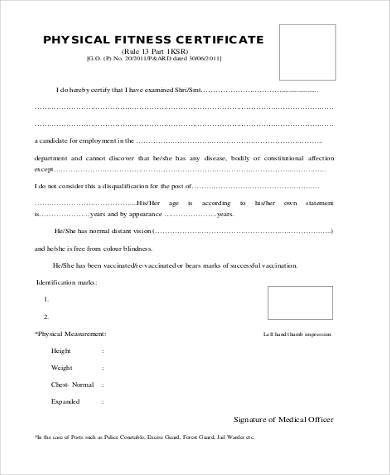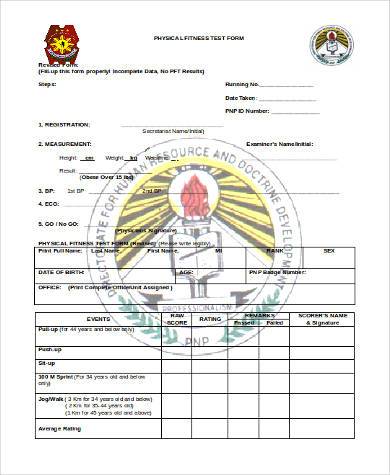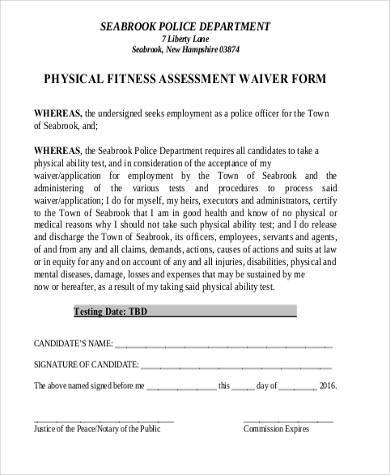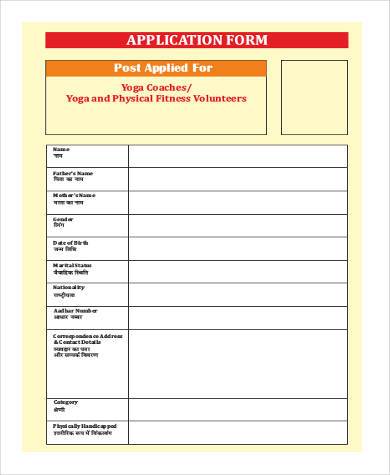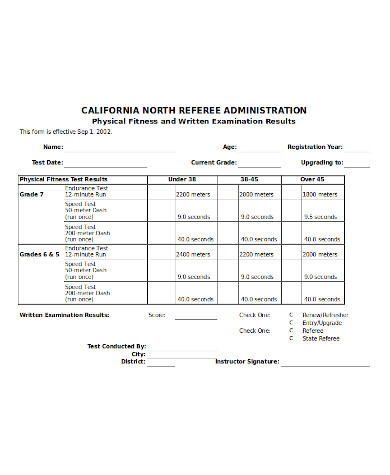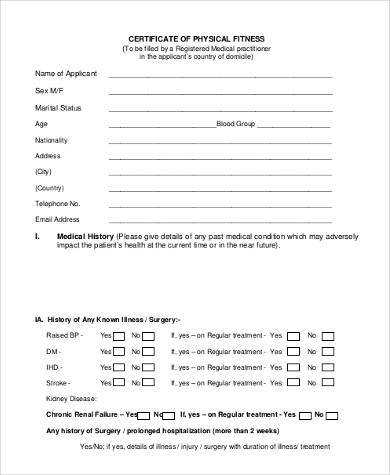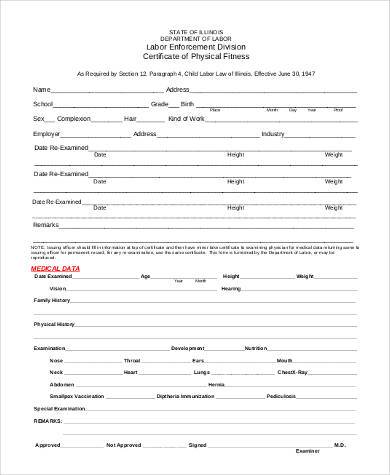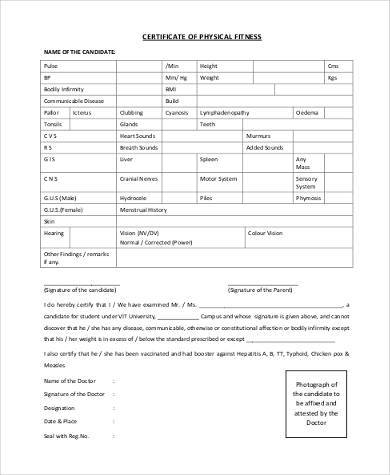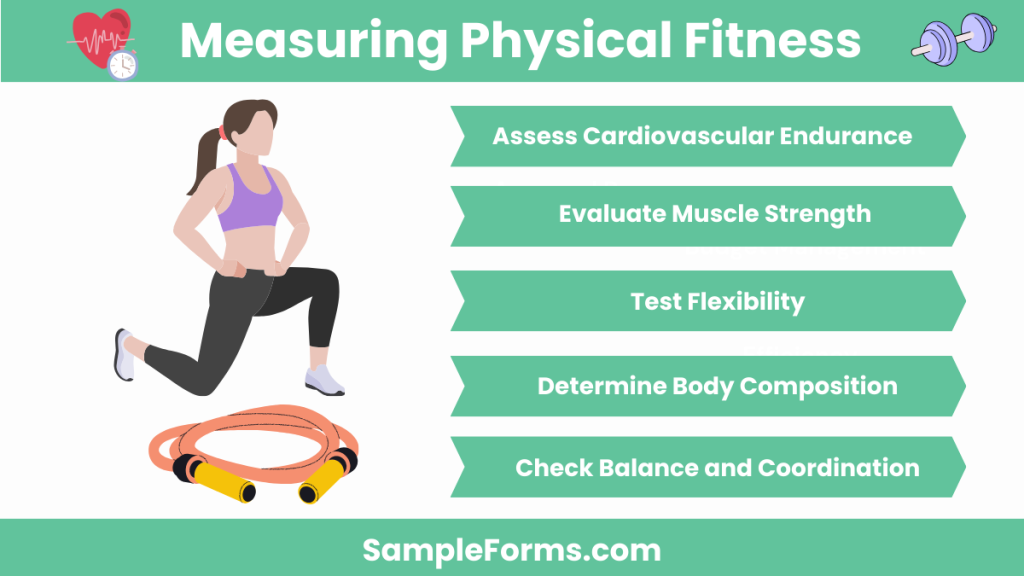Dive into the world of physical well-being with our exhaustive guide on Physical Fitness Forms. Whether you’re seeking to document your fitness journey, set health goals, or monitor progress, our guide is packed with valuable insights. Including both Fitness Form examples and detailed instructions on how to utilize Physical Form documents effectively, this guide is your go-to resource for all things related to physical health assessment. Perfect for individuals at any fitness level, our guide aims to empower you to achieve optimal health.
Download Physical Fitness Form Bundle
What is a Physical Fitness Form?
A Physical Fitness Form is a tool used to record and evaluate an individual’s physical health and capabilities. These forms serve various purposes, from tracking progress in a fitness program to assessing physical readiness for activities. They often include sections for personal health history, fitness testing results, and goal setting, making them an essential component for anyone serious about their health and fitness journey.
Physical Fitness Format
Personal Information
- Name: [Full Name]
- Date of Birth: [MM/DD/YYYY]
- Gender: [Male/Female/Other]
- Contact Number: [Phone Number]
- Email Address: [Email Address]
Medical History
- Do you have any chronic health conditions? [Yes/No]
- If yes, please specify: _______________________________
- Are you currently on any medications? [Yes/No]
- If yes, please list: _________________________________
- Do you have any history of heart disease or heart-related issues? [Yes/No]
- Have you had any surgeries in the past 5 years? [Yes/No]
- If yes, please provide details: _______________________
- Allergies (if any): ________________________________
Lifestyle Information
- Smoking Habits: [Non-Smoker/Former Smoker/Current Smoker]
- Alcohol Consumption: [None/Light/Moderate/Heavy]
- Exercise Frequency: [None/Light/Moderate/Intense]
- Types of Exercise: _____________________________
- Average Exercise Duration: ______________________
Physical Examination
- Height: ___________ (cm/in)
- Weight: ___________ (kg/lbs)
- Body Mass Index (BMI): ___________
- Blood Pressure: ___________ (mmHg)
- Resting Heart Rate: ___________ (bpm)
Fitness Assessment
(To be filled out by a qualified professional)
- Cardiorespiratory Fitness:
- Test Method: _____________________
- Results: _________________________
- Muscular Strength:
- Test Method: _____________________
- Results: _________________________
- Muscular Endurance:
- Test Method: _____________________
- Results: _________________________
- Flexibility:
- Test Method: _____________________
- Results: _________________________
Healthcare Provider’s Notes
(Optional) Additional observations or recommendations from the examining healthcare provider or fitness professional.
Declaration
- Participant’s Signature: _____________________ Date: _________
- Examiner’s Signature: ________________________ Date: _________
Physical Fitness Form with Answer
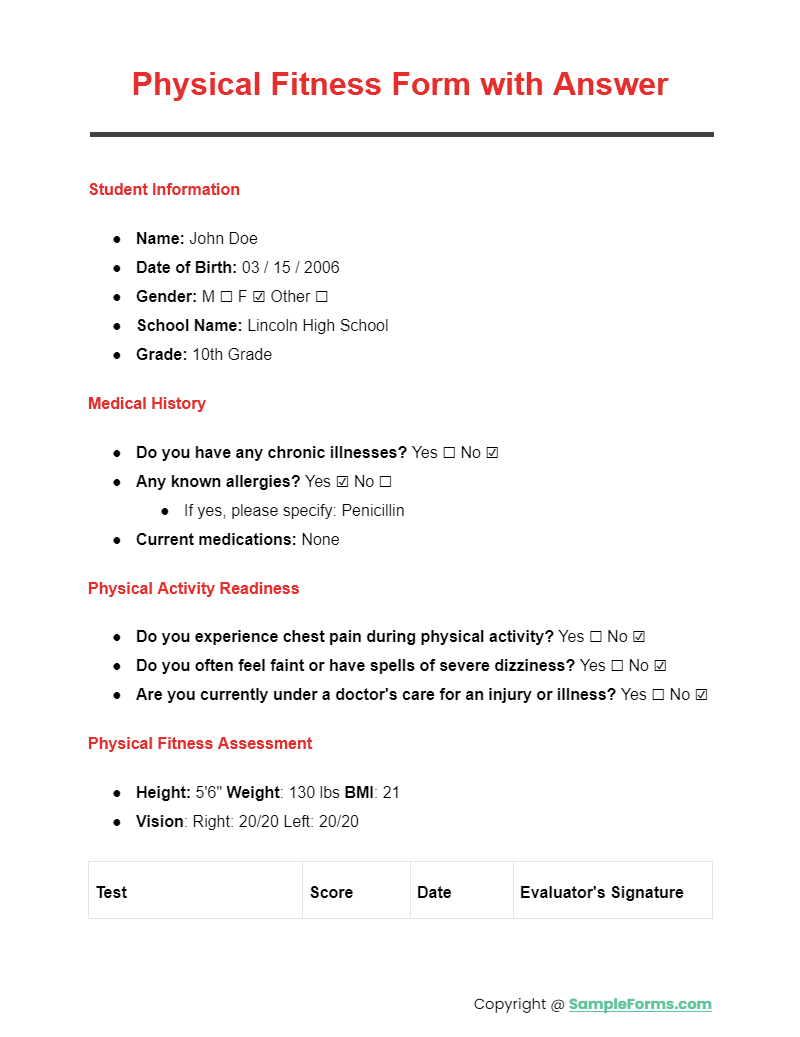
A Physical Fitness Form with Answer includes predefined responses for fitness evaluations, aiding in a streamlined review process. It often integrates a Fitness Evaluation Form, facilitating easy comparison of fitness levels and progress tracking.
Physical Fitness Form For Students
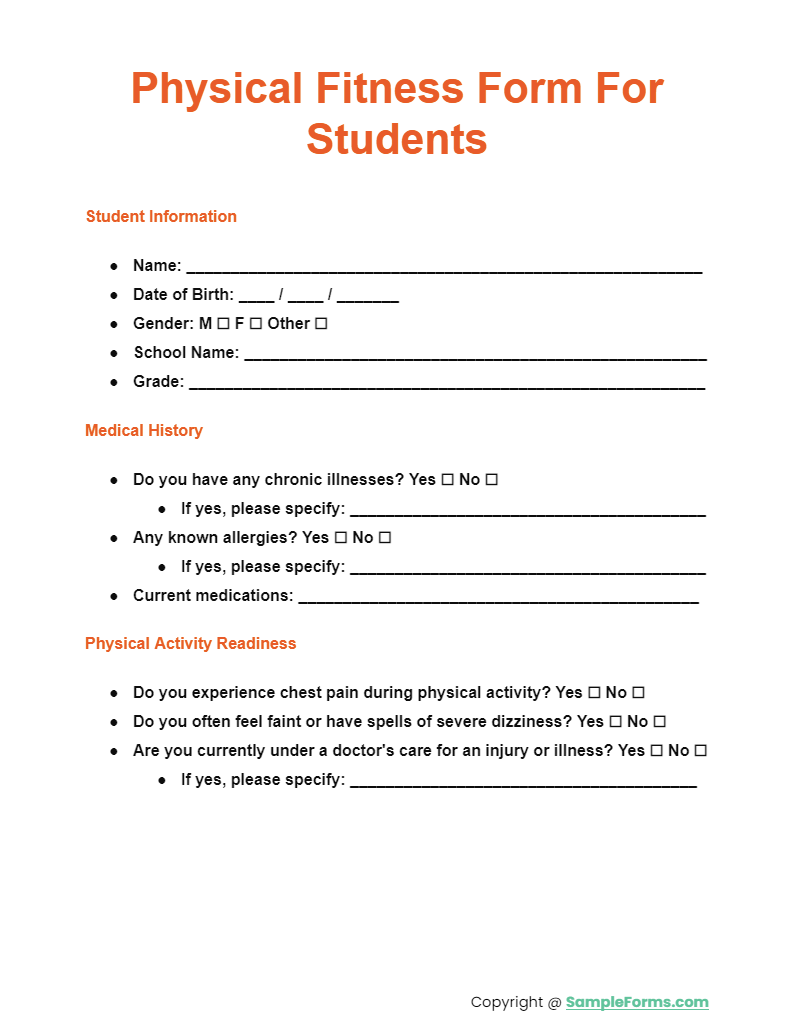
Designed specifically for the educational sector, this form assesses students’ physical health and abilities, incorporating aspects of a Fitness Feedback Form to provide valuable insights for physical education programs and student wellness initiatives.
Medical Fitness Certificate Download
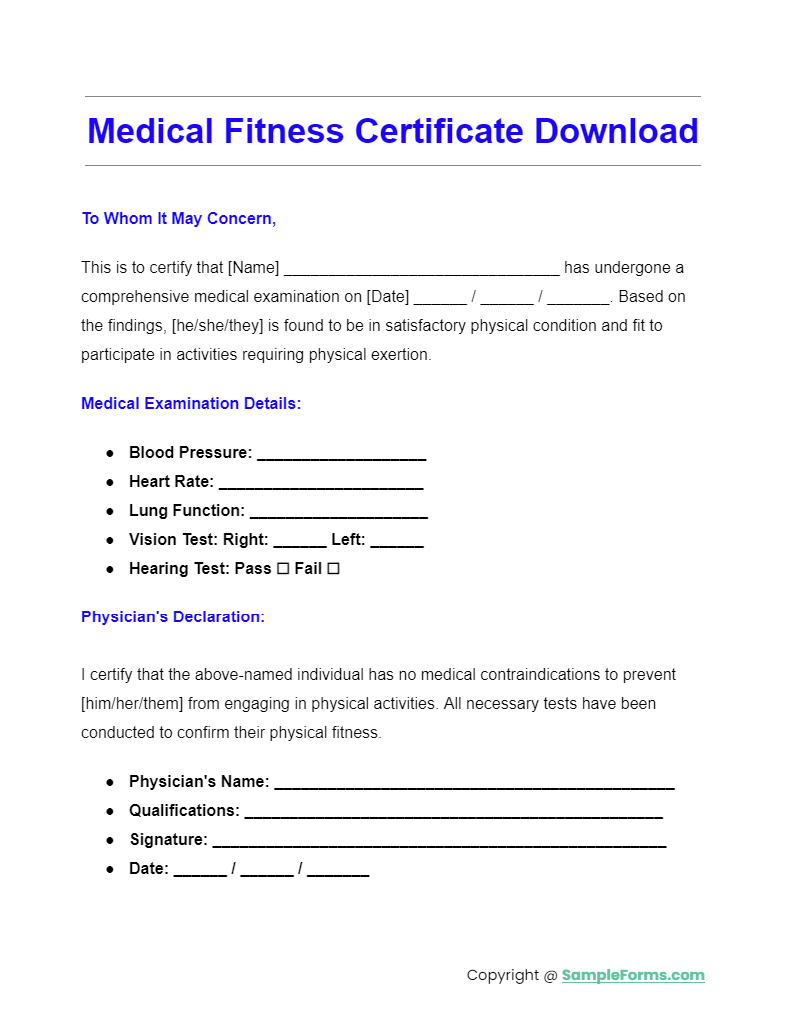
A Medical Fitness Certificate Download offers an official document, verifying an individual’s health status through a Physical Certificate Form. It’s crucial for employment, sports, and educational requirements, ensuring fitness for participation.
Physical Fitness Form Template
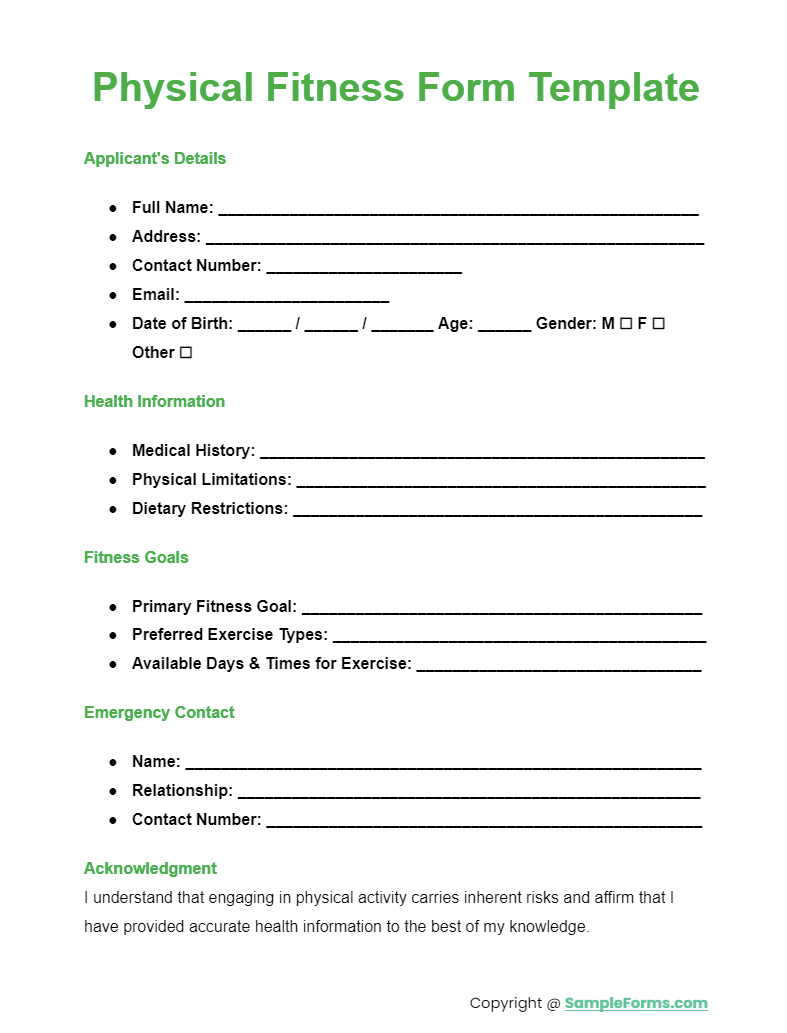
More Physical Fitness Form Samples
Physical Fitness Certificate Form
Physical Fitness Test Form
Physical Fitness Assessment Form
Physical Fitness Application Form
Physical Fitness Waiver Form
Standard Physical Fitness Form
Medical Physical Fitness Form
Army Physical Fitness Form
Physical Fitness Form in PDF
Physical Fitness Form Example
How can you measure if a person is physically fit?
Physical fitness encompasses various aspects, including cardiovascular endurance, muscle strength, flexibility, and body composition. Measuring physical fitness accurately requires assessing these components through different tests and metrics. Here are steps to determine if a person is physically fit:
1. Assess Cardiovascular Endurance
- Cooper 12-Minute Run Test: This test involves covering as much distance as possible in 12 minutes. A higher distance indicates better cardiovascular fitness. You may also see Health History Form
- Step Test or VO2 Max Test: Measures the efficiency of oxygen usage during intense exercise and provides insight into cardiovascular health. You may also see Health Surveillance Form
2. Evaluate Muscle Strength and Endurance
- Push-Up Test: Counts the maximum number of push-ups performed without rest. It measures upper body muscle strength and endurance. You may also see Health Statement Form
- Sit-Up Test: Similar to the push-up test, it assesses the endurance and strength of the abdominal muscles by counting the number of sit-ups performed in a minute. You may also see Health Examination Form
- Handgrip Strength Test: Utilizes a dynamometer to gauge hand and forearm strength. You may also see Health Information Form
3. Test Flexibility
- Sit and Reach Test: This test evaluates the flexibility of the lower back and hamstring muscles. It involves reaching forward while sitting with legs extended, and measuring the distance reached. You may also see Health Consent Form
- Shoulder Flexibility Test: Checks the ability to reach and touch both hands behind the back, indicating shoulder and upper arm flexibility. You may also see Health Care Power of Attorney Form
4. Determine Body Composition
- Body Mass Index (BMI): While not a direct measure of fitness, BMI can indicate if weight is in a healthy range for height. However, it does not differentiate between muscle and fat mass. You may also see Travel Health Form.
- Skinfold Measurements: Uses calipers to measure the thickness of skinfolds at various body points to estimate body fat percentage. You may also see Health Evaluation Form
- Bioelectrical Impedance Analysis (BIA): Sends a weak electrical current through the body to estimate body fat percentage, lean muscle mass, and hydration levels. You may also see Health Care Surrogate Form
5. Check Balance and Coordination
- Stork Stand Test: Measures the ability to maintain balance on one foot with eyes closed, indicative of balance and coordination. You may also see Health Assessment Form
- Agility Tests: Various tests, such as the shuttle run, assess agility, balance, and coordination by timing movements through a specific course. You may also see Healthcare Form
Physical fitness is multi-dimensional, and no single test can cover all aspects. A combination of these tests provides a comprehensive overview of an individual’s fitness level. It’s important to consider personal fitness goals, age, and health conditions when interpreting these tests. Regular assessment can track progress and adjust fitness routines for optimal health and performance. You may also see Health Complaint Form
What is 5 physical fitness?
The 5 components of physical fitness include:
- Cardiovascular Endurance: Assessed through aerobic activities; documented on a Sports Physical Form.
- Muscular Strength: Measured by the maximum force one can exert.
- Muscular Endurance: The ability of a muscle to perform repeated actions.
- Flexibility: The range of motion available at a joint.
- Body Composition: The ratio of body fat to lean body mass.
What are the 5 C’s of fitness?
The 5 C’s of fitness are:
- Commitment: Staying dedicated to regular physical activity
- Consistency: Maintaining a steady, regular workout routine
- Challenge: Pushing the body to improve, documented through progress in a School Physical Form.
- Control: Monitoring and adjusting workouts for safety.
- Confidence: Building self-esteem through achieved fitness goals, reflected in a Physical Form.
Here are a few tips you can consider:
Eat healthy foods
A well-balanced diet means eating foods high in protein, carbohydrates, fats, vitamins, minerals, and fiber. However, it doesn’t mean you should stop eating the foods you like – you just have to eat them in moderation.
Exercise regularly
Engage yourself in physical activities that strengthen your bones and muscles, help you control your weight, lift your mood, and allow your body to produce healthy cells.
Get enough sleep
Each individual needs to have the adequate amount of sleep, which varies depending on age and lifestyle. Sleep is necessary to repair your heart and blood vessels as well as strengthen your immune system. Another benefit of sleep is it allows you to recover the energy that was lost over the previous days. Taking naps is helpful too.
Reduce your stress levels
Although stress can’t be entirely avoided, we can minimize its impacts by managing it properly. How can we do this? Quite simple – do the things that bring you much happiness and relaxation.
Drink lots of water
Water is an essential nutrient that makes up between 60 and 70 percent of our bodies. Keeping oneself hydrated by drinking 6 to 8 glasses in a day will do wonders.
What are the 4 components of physical fitness?
The 4 fundamental components of physical fitness are:
- Cardiorespiratory Endurance: Ability of heart and lungs to supply oxygen during sustained activities, tracked on a Physical Examination Form.
- Muscular Strength and Endurance: The strength and stamina of muscles, assessed using a Physical Therapy Assessment Form.
- Flexibility: The range of motion around a joint, evaluated through a Physical Assessment Form.
- Body Composition: The ratio of body fat to lean mass, measured with a Work Physical Form.
Who is considered a fit person?
A fit person is someone who:
- Meets or exceeds the standards in the 5 components of physical fitness.
- Maintains a balanced diet and healthy lifestyle.
- Regularly engages in physical activity, as recommended in a Physical Health Form.
- Passes physical health assessments with positive feedback on a Pre Employment Physical Form.
- Possesses both physical and mental wellness, supported by regular check-ups.
What is 10 physical fitness?
The 10 components of physical fitness are an expanded list from the basic five, adding:
- Power: The ability to exert maximum force quickly, as in explosive movements.
- Speed: The capability to move swiftly, essential in various sports.
- Agility: The skill to change direction quickly and effectively.
- Balance: The capacity to maintain bodily control while stationary or moving.
- Coordination: The ability to use different parts of the body smoothly and efficiently. These are often evaluated in specialized settings, requiring detailed assessments like those found on a Physical Exam Form or DOT Physical Form.
Which ability is a skill-related fitness component?
Agility is a skill-related fitness component crucial for performance in various activities, emphasizing quick changes in direction and speed, as assessed in a Boy Scout Physical Form.
What does it mean to be medically fit?
Being medically fit means having the physical and mental health to perform daily activities without limitations, often certified by a healthcare provider on an Medical Physical Form.
What is your fitness level?
Your fitness level reflects your body’s physical capabilities across various components like endurance, strength, and flexibility, typically evaluated through assessments such as the Physical Therapy Intake Form.
What are the skill components of fitness?
The skill components of fitness include agility, balance, coordination, power, reaction time, and speed, essential for athletic performance and evaluated in specialized settings like the Employee Physical Form.
What is flexibility in physical fitness?
Flexibility in physical fitness refers to the range of motion available at a joint or group of joints, crucial for overall movement efficiency and assessed via a Physical Report Form.
Why is physical fitness attractive?
Physical fitness is attractive because it signals health, vitality, and the ability to engage in various physical activities, often contributing to overall well-being and confidence, as encouraged in an Employment Physical Form.
Related Posts
-
FREE 6+ Medical Physical Forms in PDF
-
FREE 7+ Sample Employment Physical Forms in PDF | MS Word
-
FREE 8+ Sample Physical Health Forms in PDF | MS Word
-
Physical Exam Form
-
FREE 8+ Sample School Physical Forms in MS Word | PDF
-
FREE 8+ Sample Boy Scout Physical Forms in PDF | MS Word
-
Work Physical Form
-
Dot Physical Form


